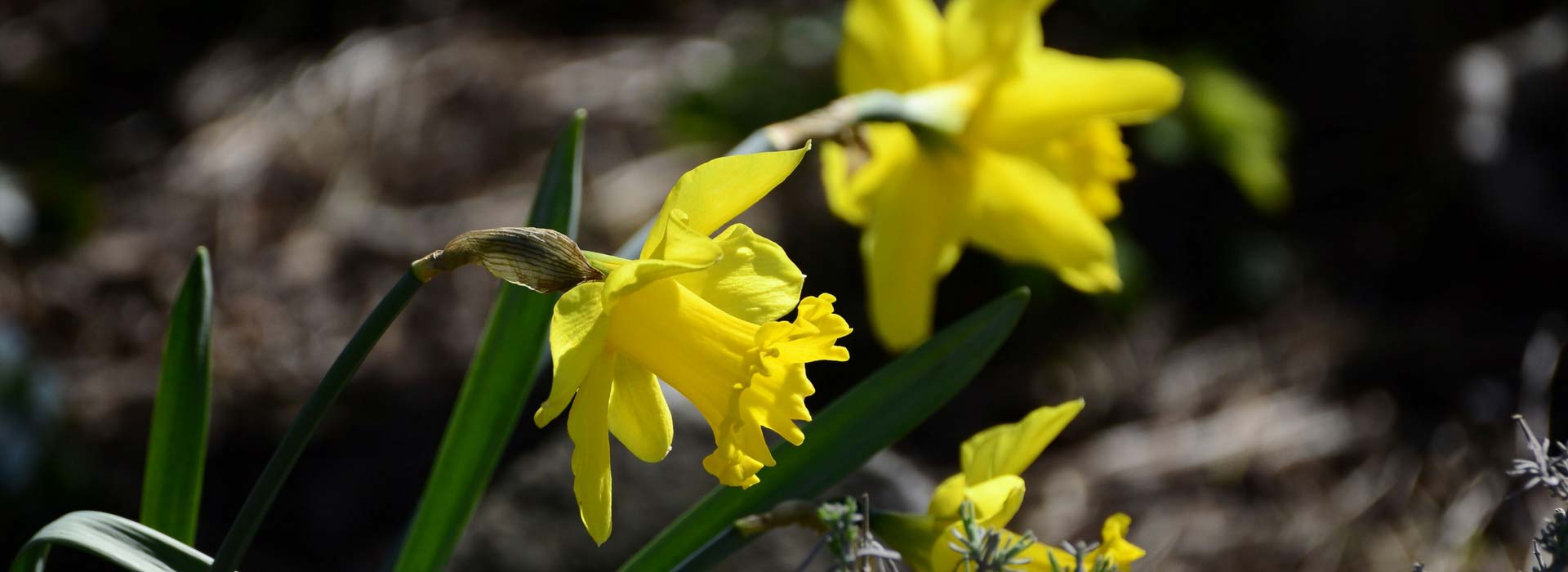
Narcissus or daffodil: planting and care
Our tips for growing them!
Contents
Daffodils are very easy to grow perennial bulb plants. They charm us with their bright spring flowering, in shades of white or yellow, sometimes orange. They grow almost anywhere and naturalise easily. Discover our tips for growing them, in pots or in the ground: When, how, and under what conditions should you plant them? How should you care for them?
When to plant daffodils?
Plant your daffodils in early autumn, ideally between September and November. However, planting is still possible until December. Planting early will allow the plant to establish itself well before winter arrives and to offer very early flowering in spring. For the earliest varieties like ‘February Gold’, don’t wait, plant them as soon as September!
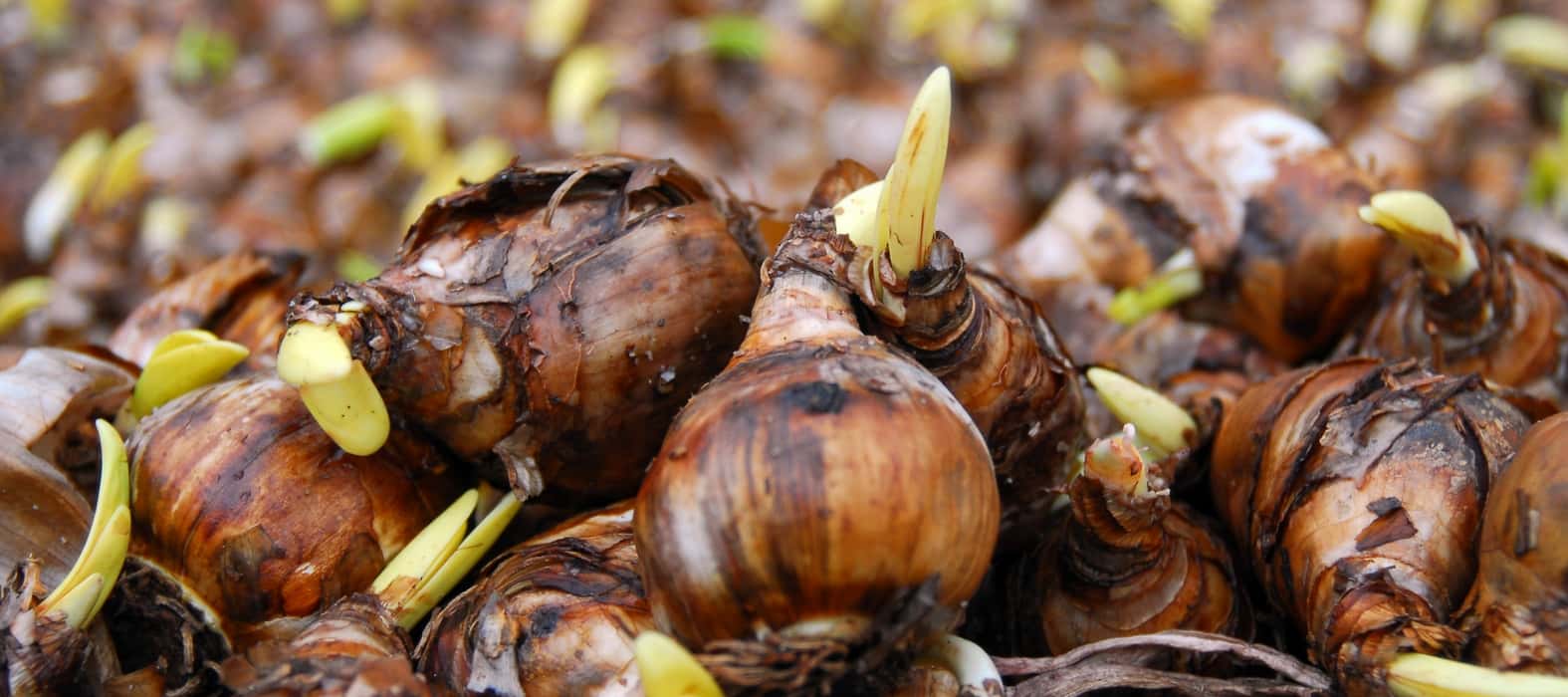
Discover other Narcissi - Daffodils
View all →Available in 1 sizes
Available in 1 sizes
Available in 1 sizes
Available in 1 sizes
Available in 1 sizes
Available in 1 sizes
Available in 1 sizes
Available in 1 sizes
Available in 1 sizes
Available in 1 sizes
Where to plant them?
Your daffodils will thrive in full sun or partial shade. You can plant them at the base of deciduous trees, in woodlands, or in a short grass meadow. They are quite undemanding and will flourish in almost any location. Unlike other bulbs that easily rot, daffodils tolerate winter moisture quite well. They grow well even in heavy or clay soils! These conditions are perfect for the Poet’s Daffodil, Narcissus poeticus. Daffodils prefer rather cool, even moist, soils in winter and spring, but after flowering they appreciate the soil remaining dry for the summer.
However, certain species such as Narcissus triandrus, Narcissus cantabricus, and Narcissus tazetta prefer well-drained soils and fairly warm conditions. They will thrive, for example, against a south-facing wall or in a rock garden. If your soil is heavy, you can mix gravel into the earth to improve drainage around the bulbs.
Daffodils prefer neutral or slightly acidic soils, with the exception of Narcissus tazetta, which prefers rather calcareous soils.
Avoid planting them near a spot where you will be working the soil to install other plants, to prevent damaging them with a spade. Similarly, it is advisable to mark the location with a stick or stake.
Daffodils adapt very well to pot planting. They can even be forced to achieve flowering between December and January. Narcissus tazetta and Narcissus ‘Paperwhite’ are the best varieties for indoor cultivation, as they are less tolerant of cold temperatures and naturally bloom quite early (in winter or early spring).
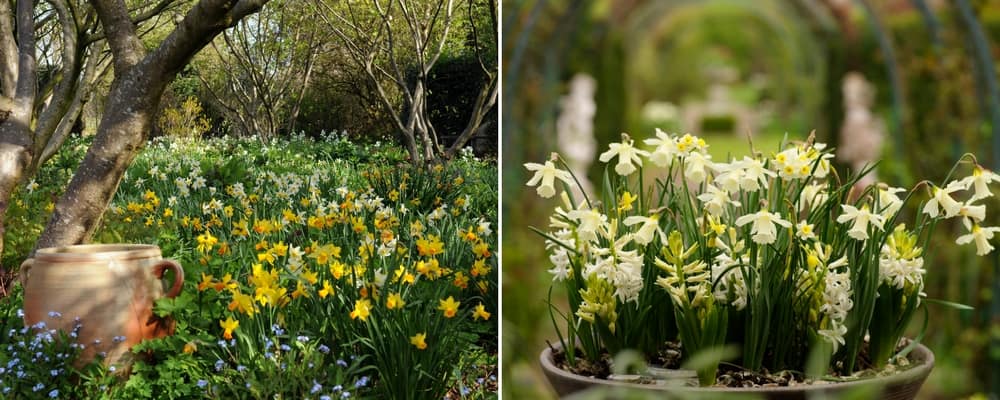
Daffodils thrive at the base of deciduous trees, but you can also plant them in pots! (photos iBulb – Wouter Koppen and Steven Bemelman)
How to plant daffodils?
Don’t hesitate to plant them in groups to form large, fairly dense clumps. For a harmonious appearance, create uniform clumps with a single variety, rather than mixing several. Maintain a distance of about ten centimetres between each bulb. To achieve a very natural effect, you can arrange them randomly, tossing them and planting them where they fall.
If you are growing Narcissus tazetta and your soil is heavy, it is advisable to add a layer of gravel for drainage.
- Dig a hole, 10 to 15 centimetres deep. We recommend planting the bulbs at a depth of three times their height. Thus, the larger ones will be planted a bit deeper than the smaller ones. Feel free to use a bulb planter.
- Place the bulb in the correct position, with the tip facing upwards. You can group three or five bulbs in the same hole to form clumps.
- Cover with soil.
- Gently press down with the palm of your hand.
Once planting is complete, we suggest applying a mulch made of a layer of dead leaves or an organic mulch.
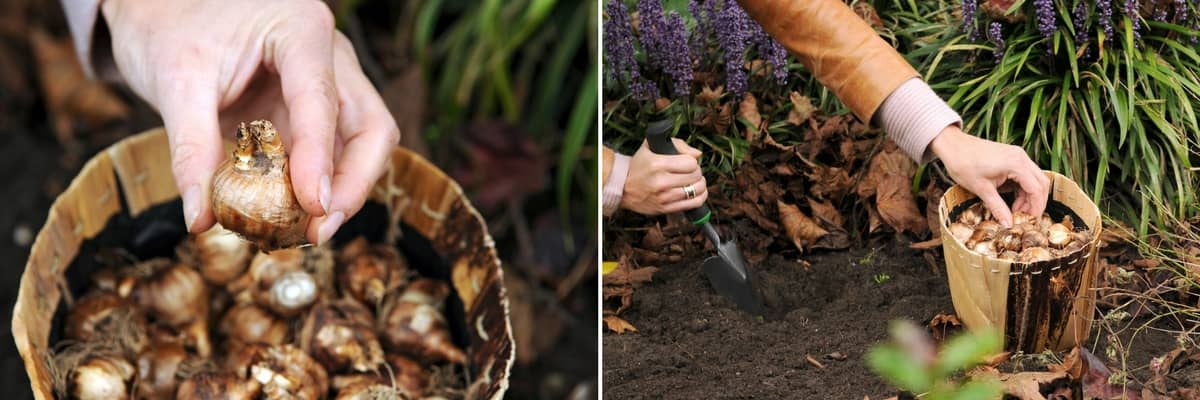
Planting daffodil bulbs (photos iBulb – Wouter Koppen)
Also, check out our video tips:
Forcing Daffodil Bulbs:
It is possible to force daffodil bulbs to advance flowering. Act in autumn, around October. Take a pot and place a layer of gravel or clay balls at the bottom. Use a rather draining substrate, for example by mixing potting soil with 1/3 sand. Plant fairly densely, placing the tips of the bulbs just below the soil surface. Water. Place the pot in a dark, cool location (ideally at a temperature between 4 °C and 8 °C). Continue to water regularly to keep the substrate moist. Two months later, move the pot to a bright, slightly warmer location (maximum 18 °C). After flowering, we recommend planting the daffodils in the garden, but it will take a few years to see them bloom again.
How to care for them?
Once flowering is over, it is best to remove the faded flowers to avoid unnecessarily exhausting the plant. You can also apply a potassium-rich fertiliser. Let the leaves wither naturally, as the bulb replenishes its reserves: wait a few weeks before mowing. If you cut the foliage too early, you risk compromising next year’s flowering. We recommend dividing your daffodils every four years, or even a bit sooner if flowering declines or the clumps become too dense. Again, you should wait until the leaves are dry and the plant has entered dormancy before intervening.
It is unnecessary to water daffodils in summer, as the bulb is in dormancy. However, do not hesitate to water late-flowering daffodils in spring if the weather is dry.
Daffodils require almost no maintenance; they grow very well on their own. Their bulbs are never attacked by rodents as they are toxic! You can even plant daffodils near other bulbs, such as tulips, to protect them… Moreover, they pair beautifully! Daffodils are also very resistant to diseases. They can sometimes be attacked by the daffodil fly (Merodon equestris), whose larvae consume the bulbs. You can protect your daffodils by mulching the soil in autumn to prevent adults from laying eggs, thus stopping the appearance of larvae. It can also happen that the petals are nibbled by slugs!
- Subscribe!
- Contents































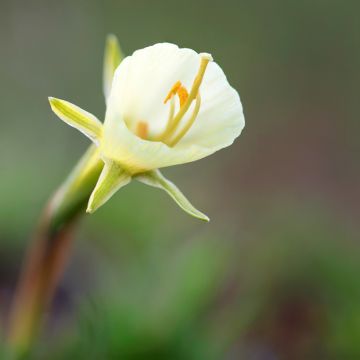
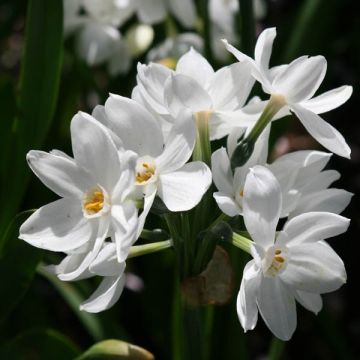
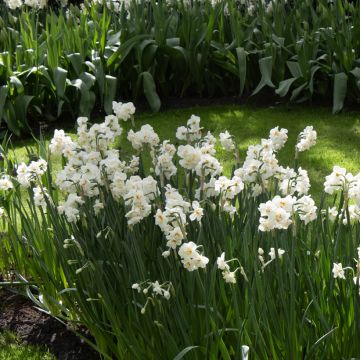
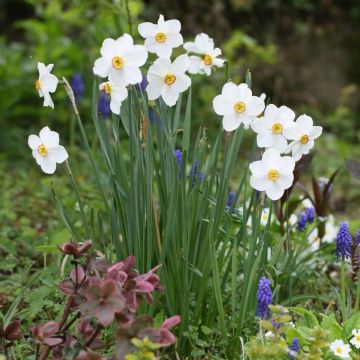
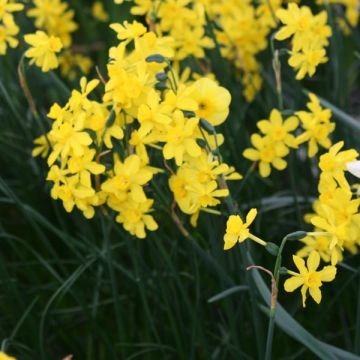


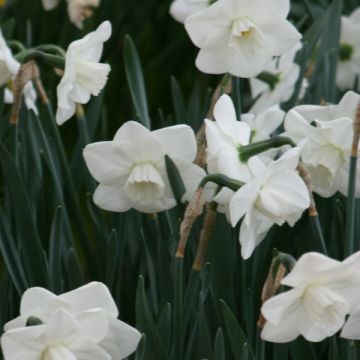


Comments